Leijie Zhang
Multimodal Hyperspectral Image Classification via Interconnected Fusion
Apr 02, 2023



Abstract:Existing multiple modality fusion methods, such as concatenation, summation, and encoder-decoder-based fusion, have recently been employed to combine modality characteristics of Hyperspectral Image (HSI) and Light Detection And Ranging (LiDAR). However, these methods consider the relationship of HSI-LiDAR signals from limited perspectives. More specifically, they overlook the contextual information across modalities of HSI and LiDAR and the intra-modality characteristics of LiDAR. In this paper, we provide a new insight into feature fusion to explore the relationships across HSI and LiDAR modalities comprehensively. An Interconnected Fusion (IF) framework is proposed. Firstly, the center patch of the HSI input is extracted and replicated to the size of the HSI input. Then, nine different perspectives in the fusion matrix are generated by calculating self-attention and cross-attention among the replicated center patch, HSI input, and corresponding LiDAR input. In this way, the intra- and inter-modality characteristics can be fully exploited, and contextual information is considered in both intra-modality and inter-modality manner. These nine interrelated elements in the fusion matrix can complement each other and eliminate biases, which can generate a multi-modality representation for classification accurately. Extensive experiments have been conducted on three widely used datasets: Trento, MUUFL, and Houston. The IF framework achieves state-of-the-art results on these datasets compared to existing approaches.
Federated Fuzzy Neural Network with Evolutionary Rule Learning
Oct 26, 2022Abstract:Distributed fuzzy neural networks (DFNNs) have attracted increasing attention recently due to their learning abilities in handling data uncertainties in distributed scenarios. However, it is challenging for DFNNs to handle cases in which the local data are non-independent and identically distributed (non-IID). In this paper, we propose a federated fuzzy neural network (FedFNN) with evolutionary rule learning (ERL) to cope with non-IID issues as well as data uncertainties. The FedFNN maintains a global set of rules in a server and a personalized subset of these rules for each local client. ERL is inspired by the theory of biological evolution; it encourages rule variations while activating superior rules and deactivating inferior rules for local clients with non-IID data. Specifically, ERL consists of two stages in an iterative procedure: a rule cooperation stage that updates global rules by aggregating local rules based on their activation statuses and a rule evolution stage that evolves the global rules and updates the activation statuses of the local rules. This procedure improves both the generalization and personalization of the FedFNN for dealing with non-IID issues and data uncertainties. Extensive experiments conducted on a range of datasets demonstrate the superiority of the FedFNN over state-of-the-art methods.
Distributed Semi-supervised Fuzzy Regression with Interpolation Consistency Regularization
Sep 18, 2022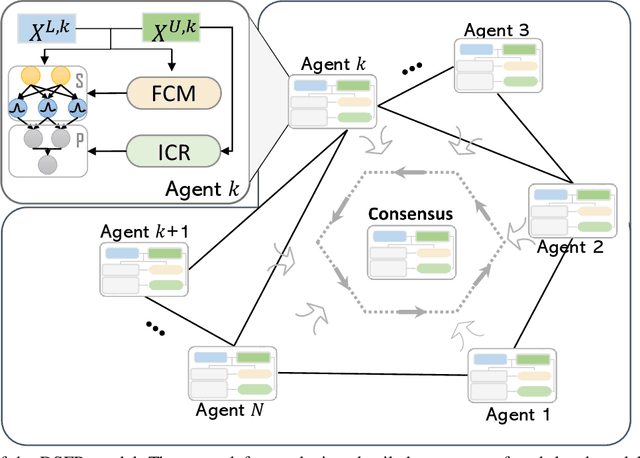
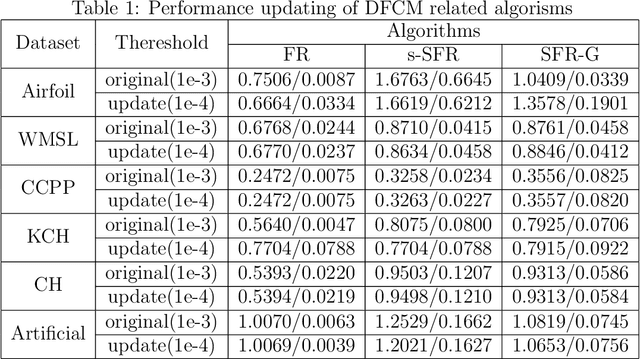
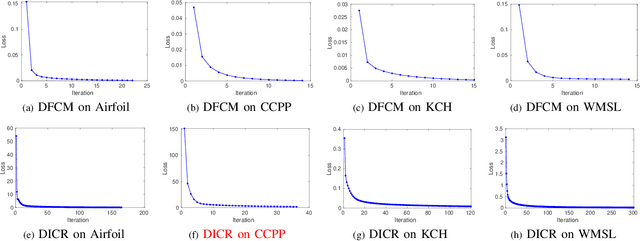
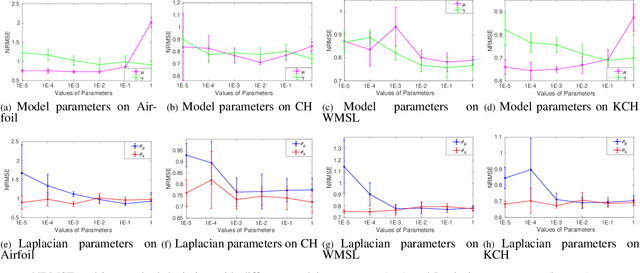
Abstract:Recently, distributed semi-supervised learning (DSSL) algorithms have shown their effectiveness in leveraging unlabeled samples over interconnected networks, where agents cannot share their original data with each other and can only communicate non-sensitive information with their neighbors. However, existing DSSL algorithms cannot cope with data uncertainties and may suffer from high computation and communication overhead problems. To handle these issues, we propose a distributed semi-supervised fuzzy regression (DSFR) model with fuzzy if-then rules and interpolation consistency regularization (ICR). The ICR, which was proposed recently for semi-supervised problem, can force decision boundaries to pass through sparse data areas, thus increasing model robustness. However, its application in distributed scenarios has not been considered yet. In this work, we proposed a distributed Fuzzy C-means (DFCM) method and a distributed interpolation consistency regularization (DICR) built on the well-known alternating direction method of multipliers to respectively locate parameters in antecedent and consequent components of DSFR. Notably, the DSFR model converges very fast since it does not involve back-propagation procedure and is scalable to large-scale datasets benefiting from the utilization of DFCM and DICR. Experiments results on both artificial and real-world datasets show that the proposed DSFR model can achieve much better performance than the state-of-the-art DSSL algorithm in terms of both loss value and computational cost.
Hierarchical fuzzy neural networks with privacy preservation for heterogeneous big data
Sep 18, 2022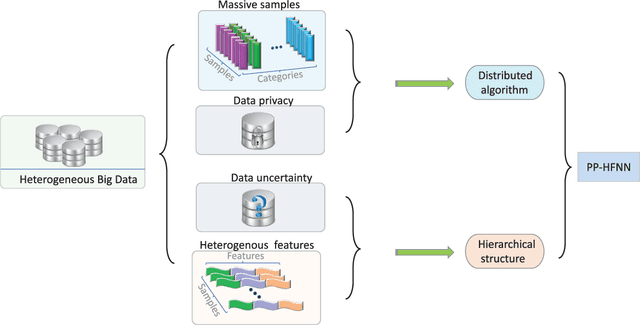
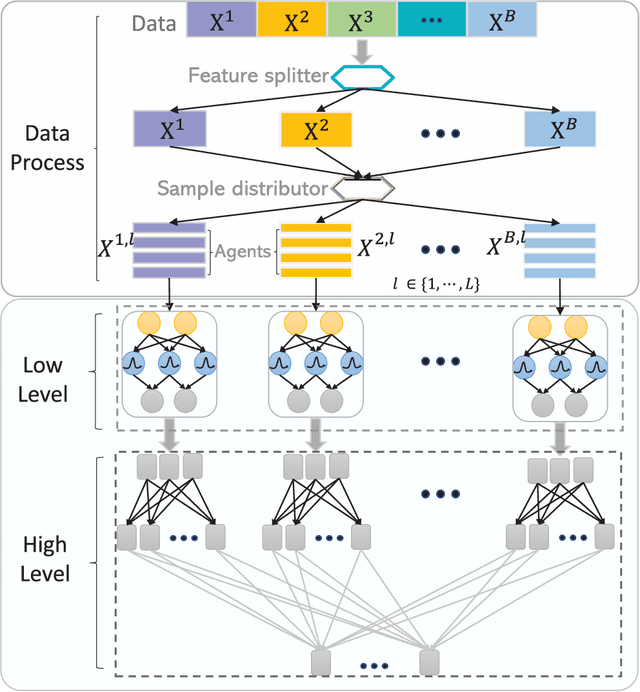
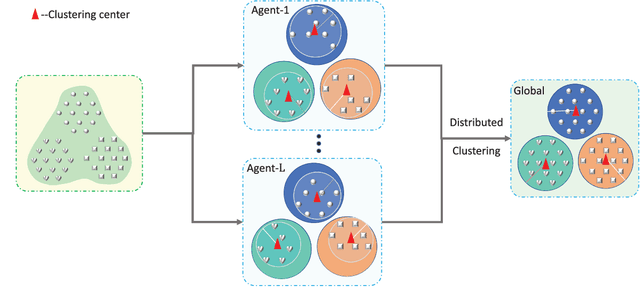

Abstract:Heterogeneous big data poses many challenges in machine learning. Its enormous scale, high dimensionality, and inherent uncertainty make almost every aspect of machine learning difficult, from providing enough processing power to maintaining model accuracy to protecting privacy. However, perhaps the most imposing problem is that big data is often interspersed with sensitive personal data. Hence, we propose a privacy-preserving hierarchical fuzzy neural network (PP-HFNN) to address these technical challenges while also alleviating privacy concerns. The network is trained with a two-stage optimization algorithm, and the parameters at low levels of the hierarchy are learned with a scheme based on the well-known alternating direction method of multipliers, which does not reveal local data to other agents. Coordination at high levels of the hierarchy is handled by the alternating optimization method, which converges very quickly. The entire training procedure is scalable, fast and does not suffer from gradient vanishing problems like the methods based on back-propagation. Comprehensive simulations conducted on both regression and classification tasks demonstrate the effectiveness of the proposed model.
 Add to Chrome
Add to Chrome Add to Firefox
Add to Firefox Add to Edge
Add to Edge